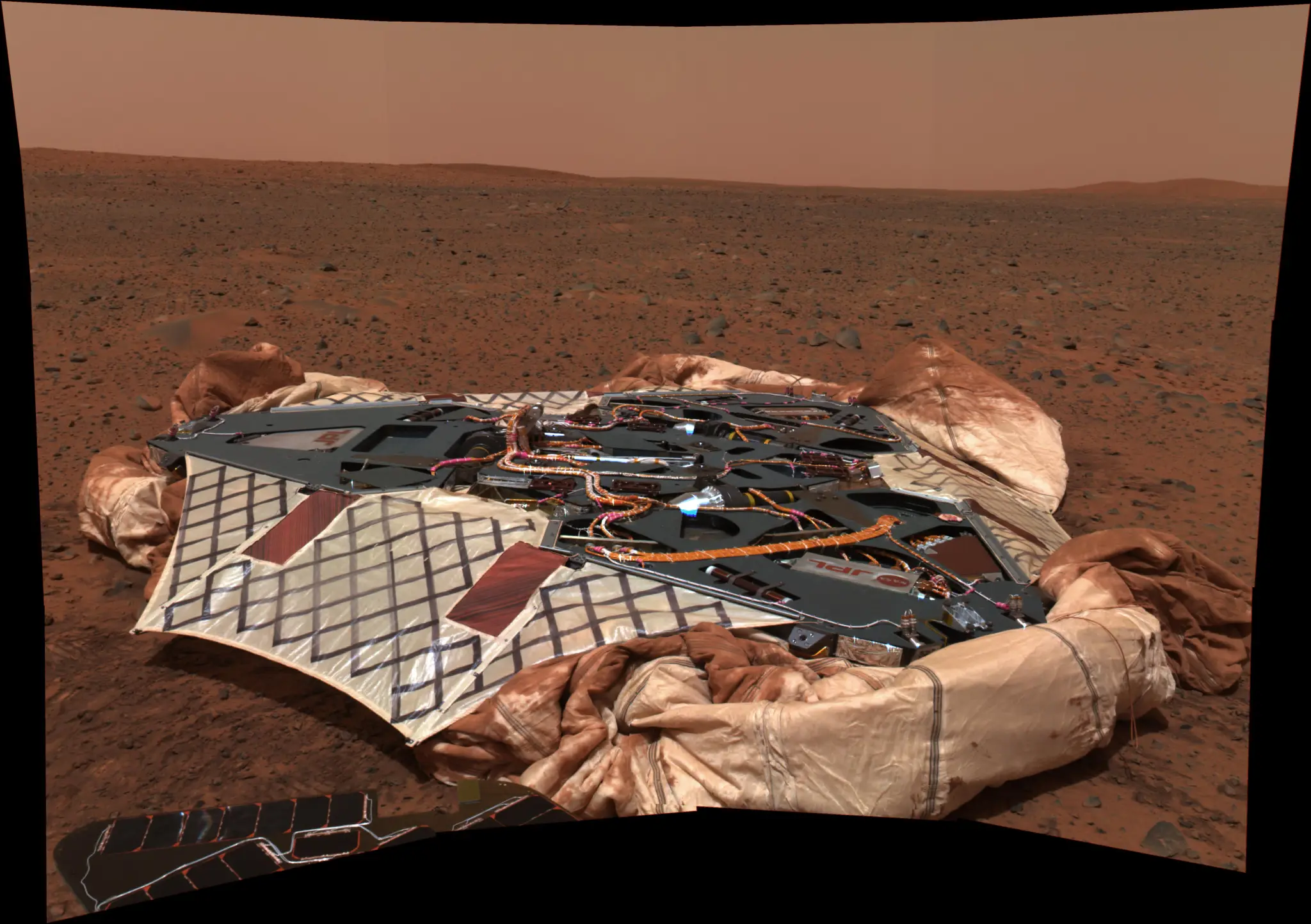When NASA launched Opportunity and its twin Spirit in 2003, the mission team was aiming for a three-month journey on Mars. According to NASA’s own historical records, each rover was built to function for just 90 sols (about 92 Earth days). Opportunity landed in Meridiani Planum, a site scientists picked because it showed signs of a watery past—minerals called hematite, which usually form in water, had been detected from orbit.
Spirit landed in Gusev Crater, a location believed to have once hosted a lake. But it was Opportunity that made history, not just by lasting longer but by crossing 45.16 kilometers (28.06 miles), the farthest any robot has ever driven on another world. Both rovers fundamentally changed what we know about ancient Martian water, confirming that Mars once had long-standing liquid water on its surface.
Discoveries That Changed Our View of Mars
Opportunity’s science legacy is huge. In 2004, just months after landing, the rover found layered bedrock in Eagle Crater, showing strong evidence of past water flow. Later, it analyzed minerals like jarosite and gypsum—both pointing to acidic, wet environments in the past.
In Endeavour Crater, Opportunity discovered clay minerals, which form in milder water, further expanding the possible history of water on Mars. These findings support the idea that Mars could have once been habitable for microbial life, a fact confirmed in NASA’s science summaries.


The 2018 Dust Storm
In June 2018, as reported by NASA JPL, Mars was engulfed by a massive dust storm—one of the most intense ever observed. The storm quickly expanded until it covered the entire planet, plunging Opportunity into darkness. This was a worst-case scenario for the rover, which relied completely on solar panels for power. John Callas, Opportunity’s project manager, described the scene: “The sky was incredibly dark, at times none of the sunlight was able to reach the surface. It was night during the day.”
The rover automatically entered low-power hibernation, shutting down all but critical systems. The dust storm lasted for several weeks, with NASA monitoring the situation daily and trying repeatedly to regain contact as the sky slowly cleared.
The Real Last Message: A Broken Image, Not Words
There’s a persistent myth—spread widely in media and on social networks—that Opportunity’s last message was the poetic phrase: “My battery is low, and it’s getting dark.” In reality, Opportunity never transmitted any human-readable message. The phrase was an interpretation by science journalist Jacob Margolis, reflecting engineers’ reports that the rover’s power was failing as the Martian sky grew darker.


The true final message was data—specifically, a “noisy,” incomplete image from the left panoramic camera, aimed at the sun. The image, archived as PIA22929 at NASA JPL, is mostly dark, full of white speckles from sensor noise, and with the bottom part missing (transmission was interrupted). According to NASA, the photo was taken on June 10, 2018 (Sol 5111), and relayed through the Mars Reconnaissance Orbiter.
The camera used its solar filter, but the sun had vanished behind a planet-wide dust cloud. While Opportunity did take more images a few minutes later, only small thumbnail versions were ever sent before the rover finally went silent.
The Long Goodbye
Following Opportunity’s last contact on June 10, 2018, NASA launched a months-long campaign to reestablish communication. The mission team sent over 1,000 recovery commands to the rover between June 2018 and February 2019. Each time, the engineers waited for a reply that never came.
On February 13, 2019, NASA held a live press briefing to officially announce the end of the mission. The final attempt to contact Opportunity had failed, marking the close of a 15-year chapter in Mars exploration.
What Made Opportunity Special
- Distance driven: 45.16 km (record for any off-Earth vehicle)
- Mission duration: 5,111 sols (Mars days), over 14 Earth years
- Landing date: January 25, 2004 (UTC)
- End of mission: February 13, 2019 (official NASA declaration)
- Landing site: Meridiani Planum, selected for evidence of ancient water
- Key science findings: Discovery of hematite “blueberries,” jarosite, gypsum, clay minerals—all markers of water
- Cameras and instruments: Panoramic camera (Pancam), Mössbauer spectrometer, Mini-TES, Alpha Particle X-ray Spectrometer, and more
Opportunity didn’t just change Mars science; it set new standards for what robotic exploration can achieve. Its discoveries have been critical to choosing landing sites for later missions, like Curiosity and Perseverance. The rover’s endurance and technical design influenced NASA’s approach to remote, solar-powered exploration.
Source link


